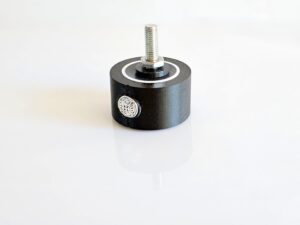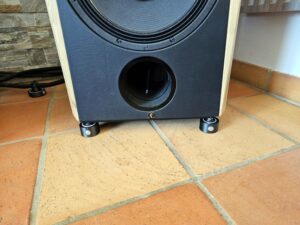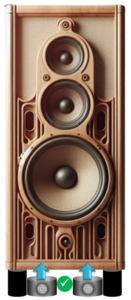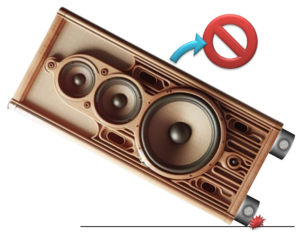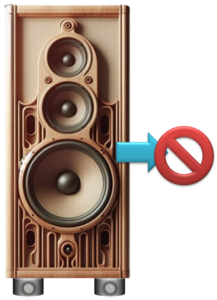Context
Our speaker feet quest started about 8 years ago, and we played and lived with many prototypes until recently. Our previous design was offered to Eric Buy for his Atlantis Lab speaker feet – as mentioned in YouTube video (French) crediting Pann Accessories. Eric positively simplified the design for mass production and to offer it in standard with each speaker.
But our Pann Atlas includes many specific features, some of these being non-industrializable… meaning that like for most of our products… it all relies on hand-work and limited quantities. But the outcome reaches far more than we expected. They transcend the speakers in a way that auditors believe we changed speakers or electronics.
Benefits
Impressive, instantly audible even at low volume:
– improved / holographic soundstage / 3D
– airy & pacified trebles
– deeper bass
– carnal mediums
– relief & details
Principle
Atlas feet use a lot of passive mechanisms for both coupling and decoupling the speaker from the ground.
Coupling, because the speakers do vibrate a lot (well… that’s their goal). The whole cabinet vibrates as an answer to the loudpspeaker pumping moves. Corners & bottom are a rendez-vous point, where the waves are at their maximum. If they are not drained out – for instance when the speaker is sitting on the floor, they bounce back out-of-phase and enter again the loudspeaker as a cancelling (low frequencies) / blurring (medium frequencies) / additive (high frequencies) parasite.
Spikes are a first answer, but due to the weight of speakers, and to protect your floor, their tip is rounded, sometimes laying on a metal disk. As a summary, it still bounces back. Read back the end of previous chapter, and you will understand what is understood and stated on the forums : with spikes, less bass, more trebles, and a messed soundstage.
Decoupling, you only want that one-way coupling. No feedback from the ground, nor any transverse vibration to prevent the main draining one from exiting the cabinet.
Design & Materials
Our main principle is to use steel all the way on the signal as a vibration motorway. this, for the same reason we avoid metal in our other constructions : its density is a heaven for vibrations. But here we want it, as we drain out.
Following our experience from Daedale feet, we use a strong thermoplastic with relative flexibily for the body of Atlas feet, added to a fair amount of carbon fiber to both add strength and vibration cancelling feature (wave to heat principle). This added to noise cancelling paths, traps and materials participate in decoupling the transversal or backward waves.
Atlas’ heart is in the shape of a hourglass, thus concentrating upper waves on a single point, then evacuating it sideways. You can view it as two spikes upside-down. This wonderous trick is achieved by a combination of extremely dense balls, both able to withstand huge weight and vibrations transmissions.
Diameter : 62mm
Height (with screw) : 75mm
Height (without screw) : 40mm
Versions
Atlas are provided as 6-set or 8-set depending on your configuration.
Present thread is M10 only
Contact us for other thread sizes or no-thread versions.
Precaution of use
While the core of Atlas is metal, its main body and top/down interfaces are softer, and its very heart is made with balls. They are designed and able to withstand high vertical pressure/weight (40Kg/foot), but not that much lateral forces.
Do not slide the speaker (further than slight adjustments) with Atlas on. Put back your nominal spikes beforehand. Or make the move while a tad lifting the speaker first.
This is particularly true on rough floors, like earthen tiles, which have irregular heights and will block proper sliding. Possibly true as well on deep carpets for about the same reason.


